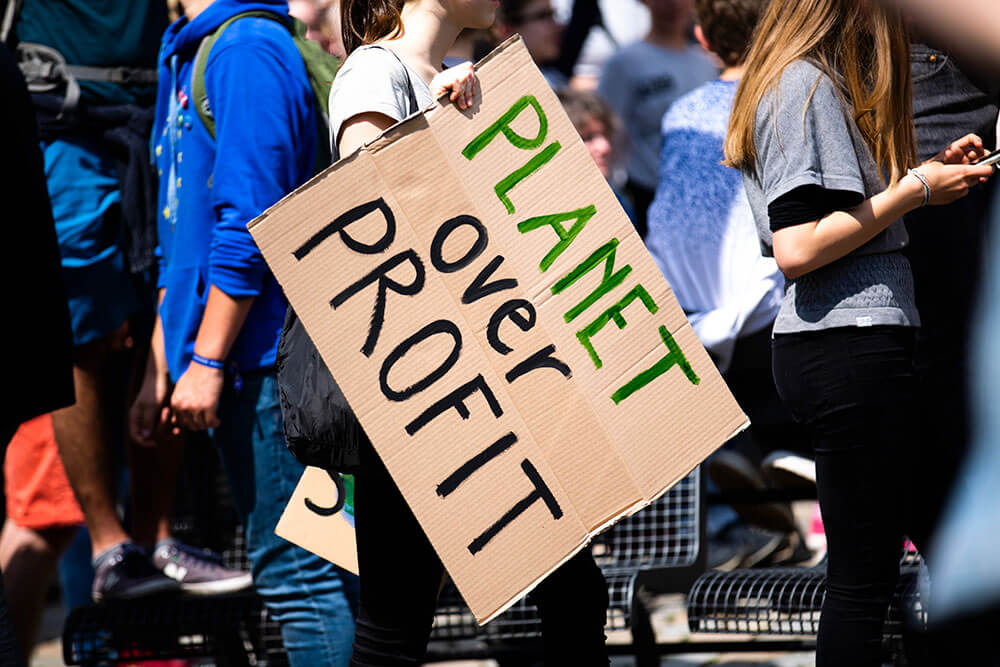 Traceability and Circular Economy
Traceability and Circular Economy

In the face of growing plastic pollution, the imperative for a sustainable and circular economy has never been more urgent. Unlike the traditional linear model of ‘take-make-dispose,’ a circular economy advocates for the continual use, recycling, and repurposing of materials to minimize waste and environmental impact.
Plastic Bank plays a pivotal role in this transformative movement. It is a social fintech challenging conventional views on discarded plastic. Instead of viewing it as waste, Plastic Bank transforms plastic into a valuable resource that prevents pollution and helps end poverty.
Collection members exchange gathered plastic for money and social benefits. Gathered plastic is then made available to recycling facilities for reprocessing into recycled plastic feedstock. In this approach, Plastic Bank uplifts underserved communities, supports local recycling efforts, and ensures discarded plastic is reintegrated into the economy—setting a high standard for sustainability.
Let’s explore how Plastic Bank’s approach goes beyond compliance, fostering a sustainable future where every piece of plastic is valued and properly managed.
The role of plastic credits in the circular economy
The circular economy helps reduce waste and pollution by designing products from recycled material. This model not only extends material lifecycles with durability, reusability, and recyclability, but also reduces the need for virgin resources.
Plastic credits are essential to advancing this model. They incentivize the collection and recycling of plastic waste, providing a measurable and marketable way to offset plastic footprints. Similar to carbon credits, organizations and individuals can purchase plastic credits to support sustainable practices and infrastructure development, ensuring that discarded plastic is reintroduced into the economy rather than ending up in landfills or the ocean.

Going beyond the minimum
Several organizations have developed standards and guidelines for plastic credit trading to ensure transparency and integrity in the market. These standards help maintain trust and credibility by verifying that the credits issued are backed by real, measurable actions.
How Plastic Bank guarantees its impact claims is rooted in our transparent, measurable, and verifiable processes. Each kilogram of plastic recovered is tracked through a secure blockchain system, providing traceability and accountability for every piece of plastic collected.
Notable standards include PREVENT Waste Alliance’s 12 Minimum Plastic Credit Methodology Requirements, which outline the essential criteria for effective plastic waste management. Plastic Bank not only meets but often exceeds these criteria, offering a comprehensive approach to plastic waste recovery.
Here’s how Plastic Bank stands out:
1. Social impact: Plastic Bank’s approach goes beyond environmental impact by providing social benefits, additional income, and access to healthcare, insurance and education to community members.
2. Improved working conditions: By adhering to its code of conduct and offering bonuses above market value, Plastic Bank ensures better working conditions for its active collection members.
3. Minimized harm: Internal audits and a strict code of conduct ensure that collection activities minimize social and environmental harm.
4. Third-party audits: Plastic Bank collaborates with independent auditing firms to verify transactions and the systems used to record them, ensuring transparency and accountability.
5. Traceability: The PlasticBank® app, powered by blockchain technology, ensures complete traceability of material and monetary flows from source to destination.
6. No double-counting: Each transaction is uniquely identified and recorded, preventing any possibility of double-counting plastic collections or credit sales.
7. Public accessibility: Data on issued plastic credits is accessible to Plastic Bank partners through their Impact Accounts, where all transactions are visible, enhancing transparency for all stakeholders.
8. Legal compliance: Plastic Bank fully complies with national laws, ensuring all activities and waste destinations meet legal standards.
9. Post-consumer focus: Collection members gather only post-consumer plastic waste, ensuring efforts are directed toward managing existing waste.
10. Recyclable waste collection: Plastic Bank targets recyclable plastic, ensuring that the gathered materials are suitable for reintegration into the circular economy.
11. Better waste destinations: Gathered plastic is sent to certified recyclers, adhering to the highest waste management standards.
12. Optimized sorting: Plastic is de-labeled, cleaned, and sorted by type and color, ensuring that the value of recycled material is maximized throughout the process.
Plastic Bank’s methodology creates a holistic approach by integrating social impact, circularity, and economic benefits. Thus, it redefines the value of plastic waste and turns it into a resource for communities to pave their paths out of poverty.
Plastic Bank and PREVENT Waste Alliance
PREVENT Waste Alliance promotes a circular economy, especially in low- and middle-income countries, by minimizing waste, eliminating pollutants, and maximizing resource reuse. PREVENT brings together over 500 member organizations, including Plastic Bank.
Participating in this powerful alliance allows Plastic Bank to not only learn from industry leaders but also contribute its expertise and methodologies to help shape effective and practical guidelines.
The work of Plastic Bank, in concert with the principles advocated by the PREVENT Waste Alliance, embodies a hopeful vision for the future. It’s a future where every piece of plastic is seen as a valuable resource, where the principles of a circular economy are not just theoretical ideals but practical realities shaping industries and uplifting underserved communities around the world.
If you want to stop plastic pollution and help end poverty, there are several ways you can get involved. Learn about your options at plasticbank.com!





